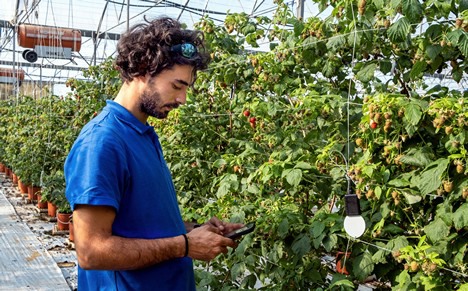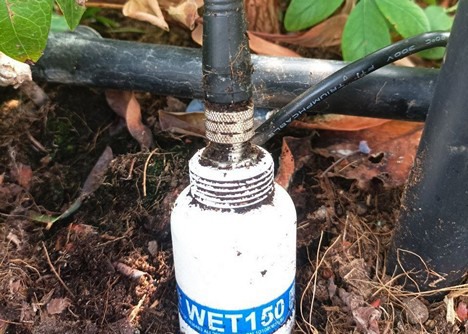The monitoring and control of the salt concentration of the nutrient solution (water + fertilizer) both at the starting point (fertigator) and at the end point (pot) is important in agriculture, especially in soils above ground.
This can be further aided by the EC Pore Water sensor, which can measure the electrical conductivity of only the liquid component present in the soil. The EC Pore Water sensor thus provides accurate electrical conductivity values in any type of soil or substrate. It is then possible to detect the absolute electrical conductivity values in the substrate and compare them with the source electrical conductivity values in the irrigation water. This allows for greater control over the water status of the plants and for cross-checks that can improve production and decrease water consumption.
 Andrea Angilletti
Andrea Angilletti
But let's take a step back! The more traditional measurement of the electrical conductivity (EC) of the water inside the pot is so far achieved by extrapolation through mechanized pressing of the aqueous medium of the substrate, with subsequent reading with a portable conductivity meter. We talked about all this, thanks to Lualtek, with Andrea Angilletti, an agro-technician and small fruit grower in Sicily.
 EC Pore Water Sensor
EC Pore Water Sensor
"Thanks to new 4.0 technologies, there are different EC measurement sensors, however, they are not to be confused with each other," explained Angilletti. "For example, the TDR sensor allows the measurement of Bulk EC, as well as the average EC of the entire soil/plant system (air/water/soil). The reading of the data can be difficult to interpret. But let's take an example with approximate values: EC nutrient solution 1500 ms; EC substrate 600; EC air (present in macropores) 200 ms, that means the Bulk EC in the pot will be about 400/500 ms."
The EC Pore Water sensor
"On the other hand, the EC Pore Water sensor allows the measurement, precisely, of EC poor water, that is, the EC of the nutrient solution inside the micropores of the substrate," continued the expert. "Here, too, let's give an example with indicative values: EC nutrient solution 1500 ms, EC substrate 600 ms, EC air (present in the macropores) 200, but EC poor water in the pot around 1600/1800 ms then. In conclusion, it is therefore more important for the technician/farmer to learn about the trend and variation of EC of the solution alone within the pot rather than the entire soil/air/water system, as the salt concentration of the solution directly affects the root system in element supply, osmosis regulation, etc. In addition, the data obtained are easy to compare (with the starting EC) and easy to interpret, as they are more widely used in academia and work."
For more information:
Lualtek srl
+39 3760494945
info@lualtek.io
www.lualtek.io
